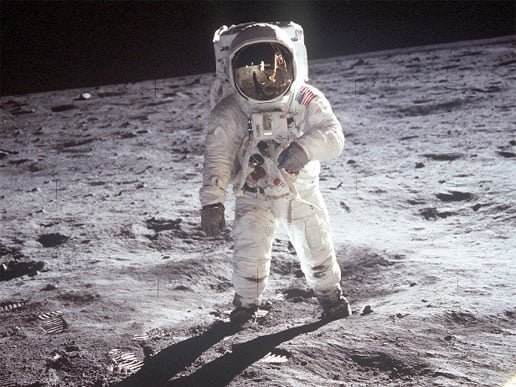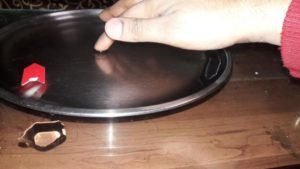The Moon is our closest neighbour in space. It orbits around us at a distance of a 384,000 km and journeys with Earth as it makes its yearly orbit around the Sun. It is a cold, lifeless ball of rock about a quarter of the size of Earth. It has no atmosphere or liquid water, and its dusty surface is covered in hollows called craters. The Moon is by far the largest object in the night sky and shines brightly by reflected sunlight. It been studied by astronomers for thousands of years and is the only place outside earth that humans have visited.

The same face
Only one side of the moon is ever visible from Earth. It is called the nearside. This is because the moon spins around once in the same amount of time that it takes to orbit once around Earth. See how the same side always faces Earth but spins and orbits in a 27.3 day period.

Moon’s Phases
The moon seems to change its shape gradually from day-to-day. It not really changing. The near side of the moon is always facing us, what we see e only the path lit by the Sun. When the moon near side is unlit, it is virtually invisible. This is called New Moon. When the near side is fully lit it is Full Moon. Each different shape of the moon. One complete cycle, from New Moon to New Moon, takes 29.5 days.

Formation of the Moon
Most astronomers think the moon was formed when a mass sized space rock collided into the young, Earth about 4,500 million years ago. Molten rock from the the two bodies splash into the space. This made a ring around Earth. Eventually the material clump together to form the Moon. The moon then cooled its rock solidified and a surface crust formed.
Surface features
We can see features on the Moon’s surface with our eyes alone .The dark patches are maria – areas of volcanic lava – and the light areas are older, higher land.

Man on Moon
Between 1969 and 1979,26 American astronauts travelled to the Moon. Twelve of thrm walked on its surface and explored six different sites .They brought back 2,000 samples of rock and dust to Earth.

Studying the Moon
The Moon has been studied in more detail than any other space object. Astronomers have used their eyes and telescopes on earth air in space to study it, Innova 60 spacecraft have successfully travelled to the Moon. What the moon is like today and what it was like in the past. About 4 billion years ago, it was bombarded by space rocks, which form craters and pushed up mountains. 3 Billion years ago, Lava seeped from inside the moon and flooded some craters, forming the maria. For the last two billion years, the Moon has hardly changed.

This article is written by Yashraj class 7th.


